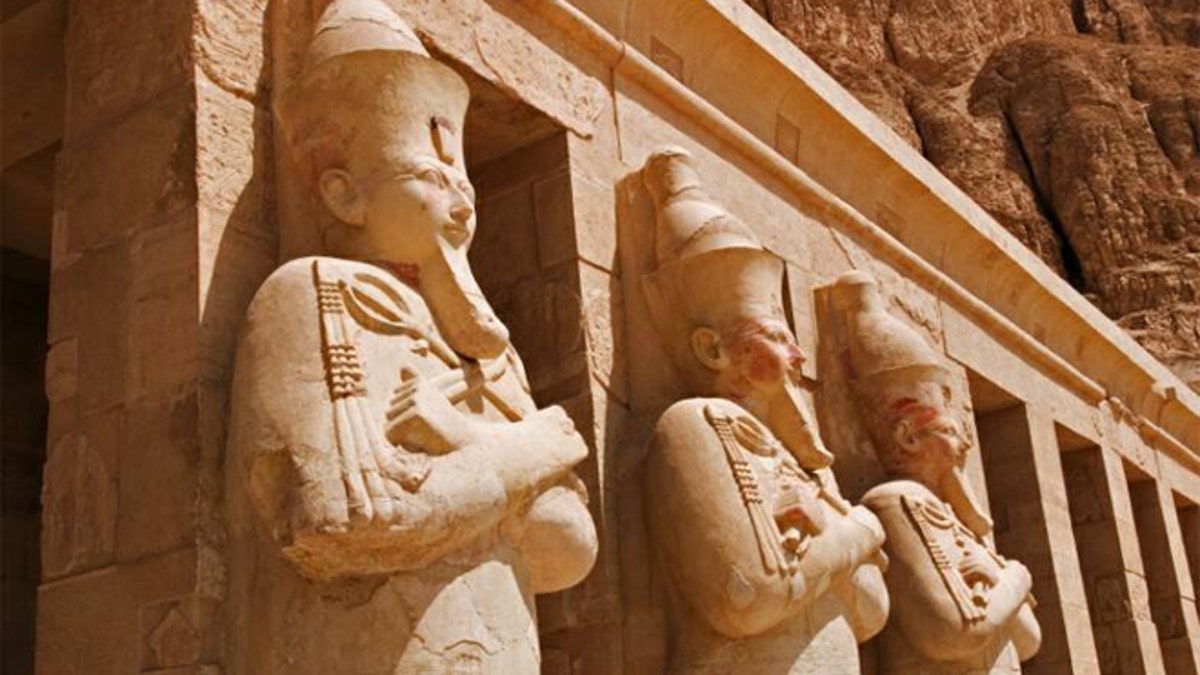
(iStock)
Egypt may be experiencing a post-uprising tourism slump following the overthrow of its former president Hosni Mubarak, but the country still remains one of the greatest destinations to discover ancient civilization and explore magnificent temples and historical sites.
The timeless structures of Egypt haunt us with the solemnity of their beauty. Lonely and majestic, these wonders have outlived the kingdoms that bore them, surviving to amaze modern visitors. These wonders provide contemporary citizens of the world a passageway to our history, as romantic and colossal as the desert landscape from which they rose.
Egypt has its own national airline, EgyptAir. Since it flies from the United States, it makes getting there much easier. Be sure to check the Department of State's website before you go, in order to stay up to date with important safety information.
Pyramids of Giza
Every visitor to Egypt should see the Great Pyramids of Giza. They loom as large in our collective imagination as they do on the Giza Plateau.
Just outside Cairo, the Giza Necropolis is home to the Great Pyramid of Giza, also known as the Pyramid of Khufu, which is the oldest and largest of the pyramids. For thousands of years, it was the tallest man-made structure on the planet. Perhaps more impressively, it is the only surviving construction listed as one the original Seven Wonders of the Ancient World.
The two other smaller -- though still gigantic -- pyramids are dedicated to Khafre and Menkaure. You will find piles of rubble to the east of the Great Pyramids. These were the queens' pyramids, honoring Khufu's wives and sisters.
The Great Sphinx
To the south of the Great Pyramid, you will find this ancient marvel, a monumental symbol of Egypt throughout the ages.
The world's largest monolithic statue, the Great Sphinx holds an eternal vigil over the Giza Necropolis. A mythological beast with a human head and a lion's body, the limestone Sphinx sits couchant, presumably forever.
When you gaze upon the Sphinx, you feel that it predates you by millennia. In Arabic, the statue is called Abū al Hūl, which means "Father of Terror."
Abu-Simbel Temples
The Abu-Simbel Temples are among the world's priceless treasures, massive in scope and significance.
When Ramses II ruled Egypt as pharaoh in the 13th century, he oversaw the construction of the Abu-Simbel Temples: two extraordinary rock temples near Lake Nasser.
The larger of these sublime structures was dedicated to Ramses II. It features four awe-inspiring statues of the ancient pharaoh, over 67 feet high with heads about four meters wide.
The smaller temple was dedicated to Hathor, the ancient Egyptian sky-goddess of love and beauty, in honor of Ramses II's favorite wife Nefertari. The temple's facade features Nefertari and Ramses II acquiring divine attributes.
In the 1960s, after the construction of the Aswan High Dam, the Egyptian government and UNESCO argued that water from Lake Nasser threatened to flood the temples. Consequently, they led a successful campaign to move the temples to their current location, a truly historic undertaking.
UNESCO declared the archaeological area that encapsulates the Abu-Simbel Temples, as well as the Sanctuary of Isis at Philae, a World Heritage Site, referred to as the Nubian Monuments.
The Valley of the Kings
On the West Bank of Luxor, you can find the Valley of the Kings. In this valley, the ancient Egyptians preserved their pharaohs in spectacular tombs for almost 500 years. This is where archaeologists uncovered Tutankhamen's tomb in 1922, almost intact, as well as the tomb of Ramses IV.